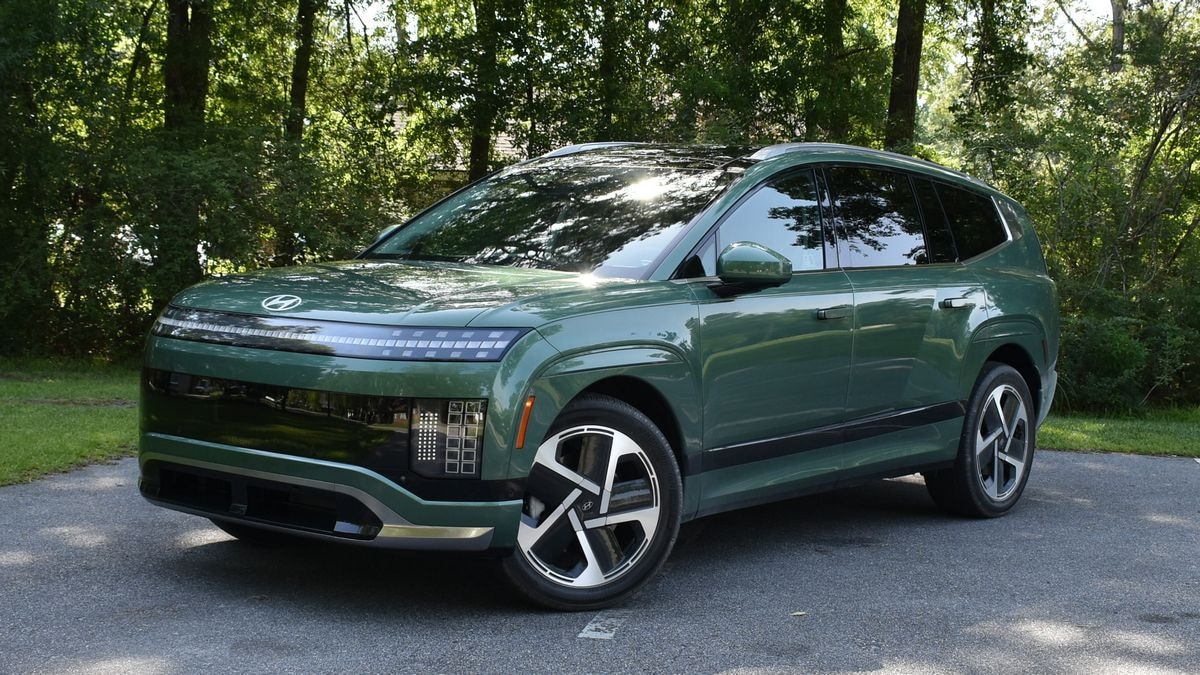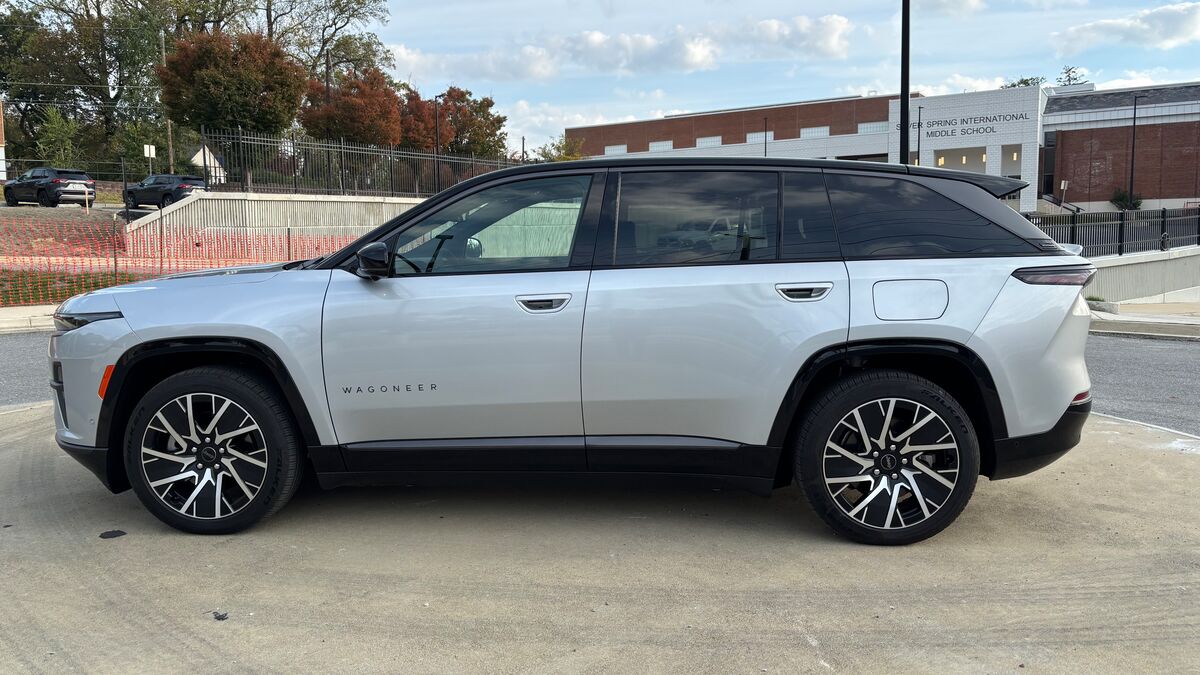The 2026 Hyundai Ioniq 9 has arrived as the brand’s flagship electric SUV. We’re consistently wowed by Hyundai’s EVs, including the Best Buy Award-winning Ioniq 5, its incredibly fun Ioniq 5 N performance variant, the stylish and long-range Ioniq 6, and the charming and affordable Kona Electric. We drove the Hyundai Ioniq 9 near the Georgia plant where it’s proudly built to see whether it continues Hyundai’s electric winning streak.
Isn’t It Ioniq?
For those confused by the name and the number, “Ioniq” (rhymes with “ironic”) is the sub-brand under which Hyundai markets most of its electric vehicles. The bigger the number, the bigger the vehicle, and the all-new Ioniq 9 midsize SUV is Hyundai’s biggest EV yet.
Every Hyundai Ioniq 9 employs the same battery pack; we’re relieved that it doesn’t have “Standard Range” and “Long Range” battery options to keep track of. Three powertrain options are on offer. A single-motor, rear-wheel-drive (RWD) arrangement is standard, and most trims have a dual-motor, all-wheel-drive (AWD) setup. The higher you go in the model range, the more power and torque you get; however, the better the performance, the worse the range.
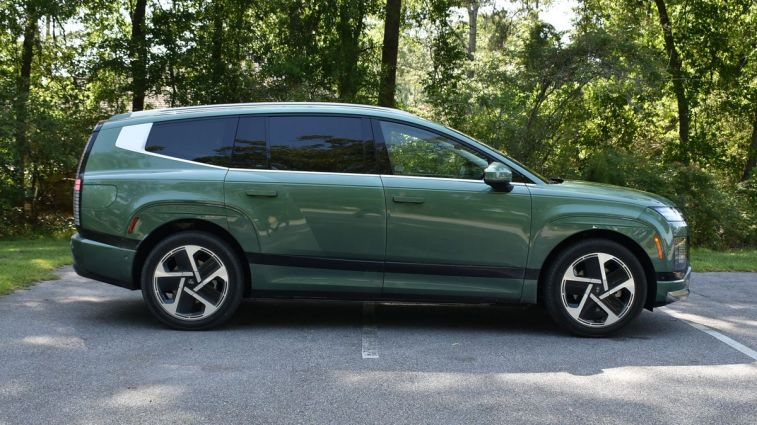
Speaking of range, one of our favorite things about the 2026 Hyundai Ioniq 9 is that every single configuration gets more than 300 miles of range. We love its corporate cousin, the Kia EV9, but that magic 300+ max range rating only comes with the Long Range rear-wheel-drive configuration. All-wheel-drive models max out at 280 miles for the Kia. Meanwhile, range ratings for the Ioniq 9 range from 311 to 335 miles. That’s right — the least efficient version of the Ioniq 9 still gets 311 miles of range on a full charge thanks to the SUV’s efficient motors and aerodynamic body.
Harmonious Drive
This might sound odd, but the Hyundai Ioniq 9 drives how it looks. There’s a unique harmony in this SUV’s exterior design, interior environment, and driving character that just clicks. Inside and out, the Ioniq 9 is inviting, yet high-tech and thoroughly modern, with its soft curves married to some blocky details integrated into the light signature and the interior design.
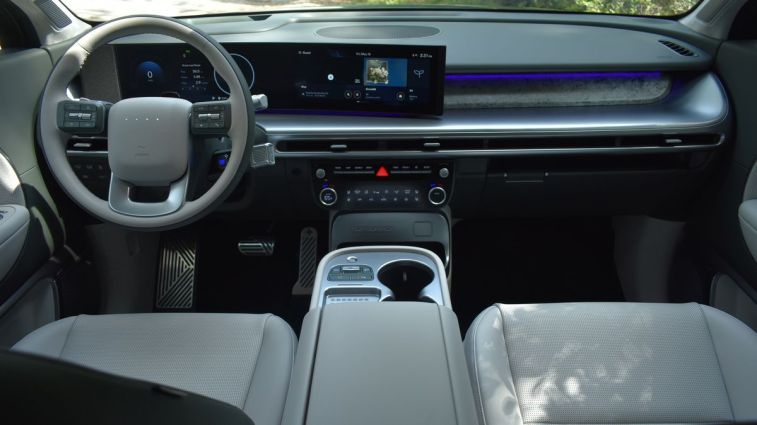
The one we tested was a Performance Calligraphy model with the strongest powertrain available in the Ioniq 9. Every trim with “Performance” in the name has all-wheel drive, 422 horsepower, 516 lb-ft of torque, and a 311-mile range. That’s a lot of power and torque for an SUV this size, but it’s delivered to the wheels in a manner that’s smooth, linear, and unintimidating. It’s more than happy to hustle when you stab the accelerator, either from a standstill or if you’re already cruising at highway speed. It doesn’t quite throw you into the back of your seat, but it’s considerably faster than your average family hauler.
Based on our experience driving very similar powertrains in Hyundai and Kia EVs, we suspect that the dual-motor setup with 303 horsepower, 446 lb-ft of torque, and 320 miles of range that comes in the SE and SEL trims is more than adequate and makes the most sense for most families. Since the all-wheel-drive SE trim doesn’t have a huge price premium over the rear-wheel-drive S model, a dual-motor Ioniq 9 is easy to recommend over the base single-motor model.
Quiet Comfort
Although the Hyundai Ioniq 9 doesn’t seem like a huge vehicle when you see it in person, its bigness is apparent as soon as you step inside. We found the second-row captain’s chairs delightful (the lower trims have a bench second-row seat), and, as always, they make the third row easier to access. I’m an even 6 feet tall, and my knees were touching the seat in front of me when I sat in the third row. These way-back seats are suitable for kids and a just-in-case option for adults. As for cargo room, there’s a perfectly usable 21.9 cubic feet of space behind the third row.
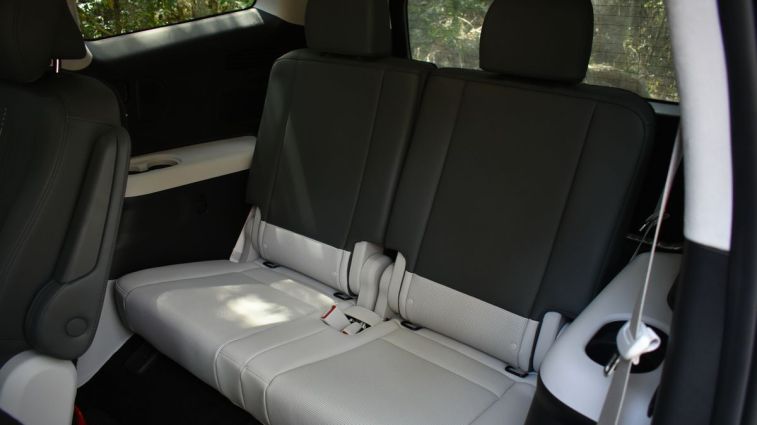
However, sitting anywhere other than the third row was quite a pleasure. The whole interior feels airy and upscale, partially aided by this EV’s whisper-quiet ride. All EVs are quiet, but the Ioniq 9 is ultra-quiet, even by EV standards. The quietness contributed to the overall pleasantness of driving or riding in the Ioniq 9, and it made the Bose premium audio system in our tester sound that much better.
Sibling Rivalry
The Ioniq branding differentiates the Ioniq 9 from a tough competitor that’s very close to home. Another SUV that might seem pretty similar on paper shares a showroom with the Ioniq 9: the Hyundai Palisade. The Palisade is a more conventional midsize 3-row SUV available with a gas or hybrid powertrain for 2026. The exterior dimensions, interior space, warranty coverage, and “H” badge on the hood are all similar or identical for these two SUVs.
The Ioniq 9 and Palisade are similar SUVs from the same brand, so why are their price tags so different? One has a starting price of approximately $20,000 higher than the other; what gives? For starters, EVs are just plain more expensive than similarly sized gas-powered vehicles. That disparity is gradually narrowing, but EV buyers still pay a premium for the costly motors and batteries in electric vehicles.
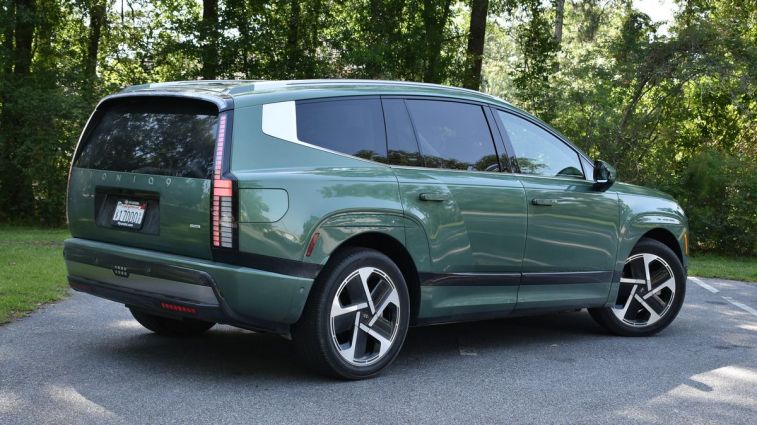
In addition, the Hyundai Ioniq 9 is a more premium product for folks with bigger budgets for their next family SUV. We can confirm that the Ioniq 9 just feels more expensive than the Palisade, with its serene drive, thoughtfully designed interior, premium materials throughout, and advanced technology. The Palisade is the one to get if you’re looking for the most bang for the buck, but if you have the appetite and the budget for a fancier EV that looks and feels a cut above the more affordable Palisade, then the Hyundai Ioniq 9 just might be the best buy in 3-row EVs.
Read our full review of the 2026 Hyundai Ioniq 9
New 2026 Hyundai IONIQ 9 Prices
|
Retail Price
|
Fair Purchase Price (92620)
|
|||
|---|---|---|---|---|
$60,555 |
TBD |
|||
$64,365 |
TBD |
|||
$67,920 |
TBD |
|||
$72,850 |
TBD |
|||
$76,590 |
TBD |
|||
$78,090 |
TBD |
